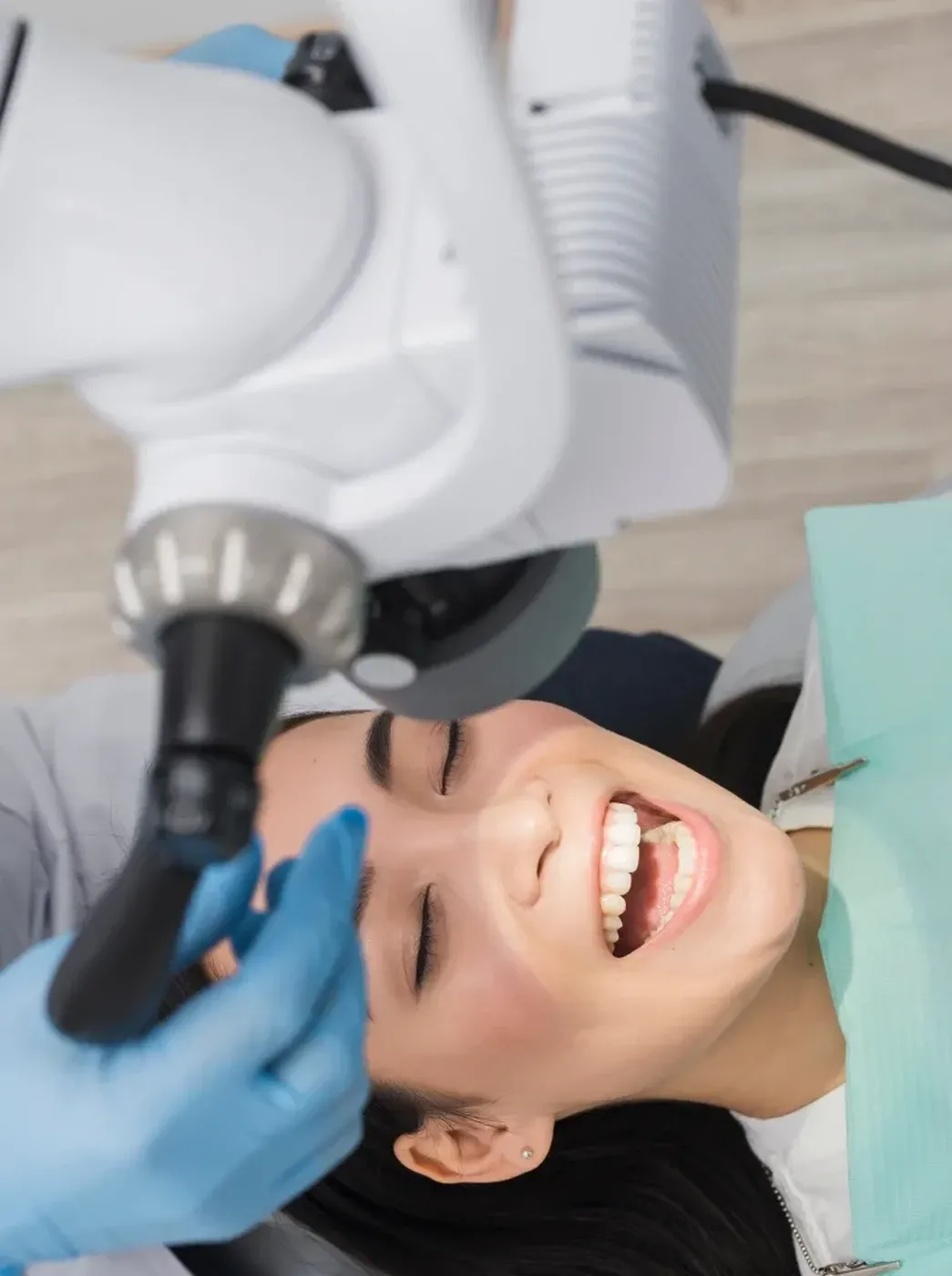
Tooth decay treatment in children
Tooth decay treatment in children is an essential part of pediatric dentistry aimed at preserving the health of both primary and permanent teeth. Tooth decay (caries) in children progresses rapidly, so timely treatment is key to preventing complications and saving the tooth.
Benefits of treating tooth decay in children:
- Preservation of dental health: Treating caries prevents further tooth destruction and the spread of infection.
- Prevention of complications: Early intervention helps avoid the development of pulpitis and periodontitis.
- Comfort and safety: Modern treatment methods ensure comfort and minimal stress for the child.
- Aesthetic results: Restores teeth to look natural and attractive.
The procedure for treating tooth decay includes the following steps:
1. Pediatric dental consultation
The first step includes a thorough examination of the child’s oral cavity, diagnosing tooth decay, and developing a treatment plan. The dentist also discusses possible treatment options with the parents.
2. Anaesthesia
Local anaesthesia is used to ensure a pain-free and comfortable experience during the procedure.
3. Cleaning the decayed area
The dentist removes the decayed tissue, cleans the cavity, and prepares it for filling.
4. Tooth filling
A filling material is applied, shaped, and hardened. The dentist carefully molds the filling to ensure a proper fit and natural appearance.
5. Final polishing
Once the filling is set, it is polished to achieve a smooth finish and enhance comfort for the child.
Types of filling materials used in our clinic:
Glass ionomer fillings
Used for primary teeth. These release fluoride, which helps strengthen tooth enamel and prevent further decay.
Composite fillings
Used for permanent teeth. These offer high durability and aesthetic appeal, closely matching the natural tooth colour.
Tooth decay prevention:
Proper oral hygiene: Brush teeth twice a day using fluoride toothpaste.
Healthy diet: Limit the intake of sweets and sugary drinks.
Regular dental visits: Routine check-ups and professional cleanings are essential.
Maintaining good dental care habits from an early age helps ensure a healthy smile for life.
Request a call
We will contact you to schedule a convenient time for your consultation and connect you with the right specialist
How can the progression of tooth decay be stopped?
The development of tooth decay can be stopped by brushing your teeth at least twice a day and using dental floss daily to remove food debris from between the teeth and along the gum line. Regular dental visits are important. Preventive measures help to avoid the occurrence of diseases or stop their development at an early stage.

What stops tooth decay?
To prevent tooth decay, it is important to maintain proper oral hygiene brush your teeth twice a day with a soft-bristled toothbrush and use dental floss. It is also necessary to limit the consumption of sweets and acidic foods.

Why is it important to treat tooth decay in children?
- Preservation of dental health: Treating tooth decay prevents further tooth destruction and the spread of infection.
- Prevention of complications: Early intervention helps prevent the development of pulpitis and periodontitis.
- Comfort and safety: Modern treatment methods ensure comfort and minimal stress for the child.
- Aesthetics: Restoration of teeth that look natural and aesthetically pleasing.

What can be done to prevent tooth decay?
- Proper oral hygiene: Regular brushing twice a day using fluoride toothpaste.
- Balanced nutrition: Limiting the consumption of sweets and sugary drinks.
- Regular dental visits: Preventive check-ups and professional teeth cleaning.

Testimonials
Very friendly staff, they treated my daughter’s baby teeth, everything was done efficiently and with high quality. We are 100% satisfied.


Request a call
We will contact you to schedule a convenient time for your consultation and connect you with the right specialist

Request a call
We’ll get back to you shortly!

Leave a Review
Your feedback means a lot to us!


